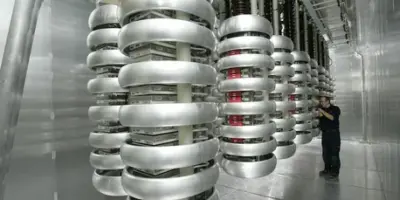Low-Carbon Propulsion Market is expected to grow at a CAGR of 21.5% during the forecasting period 2024-2033.
Low-Carbon Propulsion Market Overview
The low-carbon propulsion market has witnessed significant growth in recent years, driven by increasing environmental concerns, stringent regulations, and technological advancements. This overview will delve into the key drivers, challenges, trends, and future prospects of the low-carbon propulsion market.
1. Definition and Scope
Low-carbon propulsion refers to propulsion technologies that reduce or eliminate greenhouse gas emissions and other pollutants compared to traditional fossil fuel-based propulsion systems. These technologies include electric propulsion, hydrogen fuel cells, biofuels, and hybrid systems.
2. Key Drivers
- Environmental Regulations: Stringent environmental regulations aimed at reducing carbon emissions and air pollution have propelled the adoption of low-carbon propulsion technologies in various sectors, including automotive, aviation, marine, and rail.
- Climate Change Concerns: Growing awareness of climate change and its adverse effects on the environment has led to increased pressure on industries to transition to cleaner propulsion systems.
- Technological Advancements: Advances in battery technology, fuel cells, and renewable energy sources have made low-carbon propulsion more feasible and cost-effective, driving market growth.
- Energy Security: Diversification of energy sources and reducing dependency on fossil fuels for propulsion systems enhances energy security and resilience against supply disruptions.
3. Electric Propulsion
Electric propulsion systems use electricity to drive vehicles or machinery, eliminating tailpipe emissions and reducing dependence on fossil fuels. Key developments in electric propulsion include:
- Battery Electric Vehicles (BEVs): BEVs have gained traction in the automotive sector due to advancements in battery technology, longer driving ranges, and expanding charging infrastructure.
- Electric Aviation: Electric propulsion is being explored for short-haul flights and urban air mobility, with companies developing electric aircraft prototypes and hybrid-electric propulsion systems.
- Electric Marine Propulsion: Electric propulsion systems are increasingly used in ships and boats, offering quiet operation, reduced emissions, and lower operating costs compared to traditional diesel engines.
4. Hydrogen Fuel Cells
Hydrogen fuel cells convert hydrogen gas into electricity through an electrochemical reaction, emitting only water vapor and heat. Key aspects of hydrogen fuel cells include:
- Fuel Cell Vehicles (FCVs): FCVs use hydrogen as fuel and offer zero-emission transportation, with companies like Toyota, Hyundai, and Honda investing in fuel cell technology.
- Stationary Applications: Hydrogen fuel cells are used in stationary power generation for backup power, off-grid applications, and as a clean energy source for buildings and industries.
5. Biofuels
Biofuels are derived from renewable biomass sources such as plants, algae, and organic waste, offering a lower carbon footprint compared to fossil fuels. Key biofuel developments include:
- Biodiesel: Biodiesel, produced from vegetable oils or animal fats, can be used in diesel engines with minimal modifications, reducing greenhouse gas emissions and particulate matter.
- Ethanol: Ethanol, primarily produced from corn or sugarcane, is blended with gasoline to reduce emissions in conventional vehicles and flex-fuel vehicles.
- Advanced Biofuels: Research and development efforts focus on advanced biofuels produced from non-food feedstocks, such as cellulosic biomass, algae, and waste materials.
6. Hybrid Systems
Hybrid propulsion systems combine two or more power sources, such as internal combustion engines, electric motors, and energy storage systems, to optimize efficiency and reduce emissions. Key hybrid system configurations include:
- Hybrid Electric Vehicles (HEVs): HEVs combine an internal combustion engine with an electric motor and battery pack to improve fuel efficiency and reduce emissions.
- Plug-in Hybrid Electric Vehicles (PHEVs): PHEVs feature a larger battery capacity than HEVs, allowing for extended electric-only driving range and reduced reliance on gasoline.
- Hybrid Marine Propulsion: Hybrid propulsion systems are used in ships and vessels to enhance fuel efficiency, reduce emissions, and comply with environmental regulations.
Receive the FREE Sample Report of Low-Carbon Propulsion Market Research Insights @ https://stringentdatalytics.com/sample-request/low-carbon-propulsion-market/13361/
Market Segmentations:
Global Low-Carbon Propulsion Market: By Company
• Tesla
• BYD Company Ltd.
• YUTONG
• Nissan
• Bombardier
• Siemens
• Alstom
• Toyota
• Honda Motor Co. Ltd.
• Hyundai Motor Group
Global Low-Carbon Propulsion Market: By Type
• Heavy-Duty Vehicle
• Light-Duty Vehicle
Global Low-Carbon Propulsion Market: By Fuel Type
• Compressed Natural Gas (CNG)
• Liquefied Natural Gas (LNG)
• Ethanol
• Hydrogen
• Electric
Regional Analysis of Global Low-Carbon Propulsion Market
All the regional segmentation has been studied based on recent and future trends, and the market is forecasted throughout the prediction period. The countries covered in the regional analysis of the Global Low-Carbon Propulsion market report are U.S., Canada, and Mexico in North America, Germany, France, U.K., Russia, Italy, Spain, Turkey, Netherlands, Switzerland, Belgium, and Rest of Europe in Europe, Singapore, Malaysia, Australia, Thailand, Indonesia, Philippines, China, Japan, India, South Korea, Rest of Asia-Pacific (APAC) in the Asia-Pacific (APAC), Saudi Arabia, U.A.E, South Africa, Egypt, Israel, Rest of Middle East and Africa (MEA) as a part of Middle East and Africa (MEA), and Argentina, Brazil, and Rest of South America as part of South America.
Click to Purchase Low-Carbon Propulsion Market Research Report @ https://stringentdatalytics.com/purchase/low-carbon-propulsion-market/13361/?license=single
Challenges and Barriers
Despite the growth prospects, the low-carbon propulsion market faces several challenges and barriers:
- Infrastructure Development: The deployment of electric vehicle charging stations, hydrogen refueling stations, and biofuel production facilities requires significant infrastructure investment and regulatory support.
- Cost and Affordability: High upfront costs of low-carbon propulsion technologies, such as electric vehicles and hydrogen fuel cells, remain a barrier to widespread adoption, although declining costs and government incentives are helping mitigate this challenge.
- Range and Performance: Range anxiety and performance limitations of electric vehicles and hydrogen fuel cell vehicles compared to conventional vehicles pose challenges to consumer acceptance and market penetration.
- Technological Limitations: Technical challenges related to energy density, battery life, hydrogen storage, and infrastructure interoperability need to be addressed to improve the efficiency and reliability of low-carbon propulsion systems.
Market Trends
- Electrification: Continued electrification across various transportation sectors, including passenger vehicles, public transit, and commercial fleets, driven by advancements in battery technology, declining costs, and supportive policies.
- Renewable Fuels: Increasing focus on sustainable aviation fuels (SAFs), renewable diesel, and bio-based alternatives to conventional fuels to reduce carbon emissions in aviation, shipping, and other industries.
- Hydrogen Economy: Growing interest in hydrogen as a clean energy carrier for fuel cell vehicles, energy storage, industrial applications, and power generation, supported by government initiatives and private sector investments.
- Integration and Connectivity: Integration of low-carbon propulsion systems with smart grid technologies, vehicle-to-grid (V2G) communication, and renewable energy sources to optimize energy efficiency and grid stability.
Future Outlook
The low-carbon propulsion market is expected to witness robust growth in the coming years, driven by regulatory mandates, technological advancements, and increasing environmental consciousness. Key future trends and developments include:
- Expansion of Electric Mobility: Continued growth of electric vehicles across passenger, commercial, and public transport sectors, with advancements in battery technology enabling longer ranges, faster charging, and lower costs.
- Hydrogen Adoption: Accelerated deployment of hydrogen fuel cell vehicles, expansion of hydrogen refueling infrastructure, and scaling up of green hydrogen production to support decarbonization efforts in transportation and other sectors.
- Policy Support: Strengthening of government policies, incentives, and regulatory frameworks to promote the adoption of low-carbon propulsion technologies, including vehicle emissions standards, carbon pricing, and renewable fuel mandates.
- Industry Collaboration: Increased collaboration among automakers, energy companies, infrastructure providers, and policymakers to accelerate the transition to low-carbon propulsion and achieve sustainable mobility goals.
About Stringent Datalytics
Stringent Datalytics offers both custom and syndicated market research reports. Custom market research reports are tailored to a specific client’s needs and requirements. These reports provide unique insights into a particular industry or market segment and can help businesses make informed decisions about their strategies and operations.
Syndicated market research reports, on the other hand, are pre-existing reports that are available for purchase by multiple clients. These reports are often produced on a regular basis, such as annually or quarterly, and cover a broad range of industries and market segments. Syndicated reports provide clients with insights into industry trends, market sizes, and competitive landscapes. By offering both custom and syndicated reports, Stringent Datalytics can provide clients with a range of market research solutions that can be customized to their specific needs.
Reach US
Stringent Datalytics
+1 346 666 6655
Social Channels:
Linkedin | Facebook | Twitter | YouTube




Leave a Reply